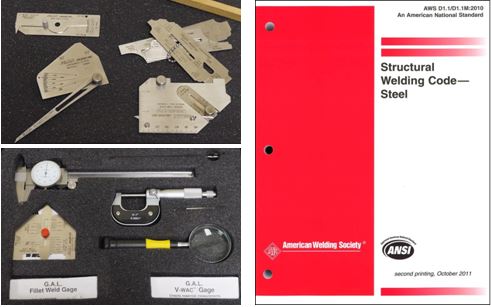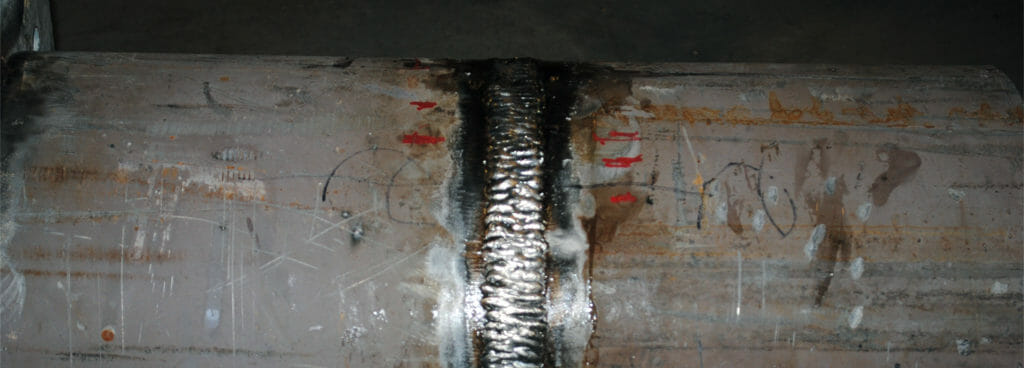A Comprehensive Overview to Welding Inspection Madison Requirements
A Comprehensive Overview to Welding Inspection Madison Requirements
Blog Article
Understanding the Fundamentals of Welding Inspection to Ensure Top Quality and Safety And Security
In the world of contemporary engineering, welding inspection stands as a keystone for making sure both the high quality and security of structural productions. The process involves a thorough evaluation of welded joints, employing innovative methods such as ultrasonic and radiographic screening to find covert imperfections. The proficiency of qualified assessors is important, as they bridge the void between academic requirements and practical application. Their duty extends past mere discovery, including the documentation and interaction of findings to pertinent stakeholders. What are the nuances of these assessment methods that make them crucial for preserving architectural integrity?

Importance of Welding Assessment
In the world of commercial fabrication, the significance of welding assessment can not be overemphasized. Welding assessment plays a critical function in ensuring the stability, security, and durability of welded structures. Given the diverse applications of welding in industries such as construction, automotive, aerospace, and shipbuilding, the need for stringent quality control measures is paramount. Correct examination makes certain that welds fulfill defined requirements and codes, which is important for avoiding structural failings that can cause disastrous repercussions.
The procedure of welding inherently entails intricate variables, including temperature level, product residential properties, and environmental conditions, every one of which can affect the top quality of the weld. A thorough evaluation identifies problems such as fractures, porosity, and insufficient fusion, which can jeopardize the strength and integrity of the weld. By discovering these issues early, rehabilitative actions can be taken, consequently decreasing the threat of failing and connected costs.
Furthermore, welding inspection adds to regulatory compliance, as several markets are controlled by stringent safety and security requirements and standards. Failure to follow these laws can result in lawful responsibilities and monetary fines. Eventually, welding inspection not only safeguards physical frameworks yet also maintains and safeguards human lives market track records.

Key Welding Inspection Techniques
Although welding evaluation is vital to making certain the quality and safety of welded structures, it is the particular methods utilized that identify the efficiency of the assessment procedure. Secret welding assessment techniques can be extensively classified right into non-destructive testing (NDT) and damaging testing. Non-destructive testing approaches such as aesthetic examination, ultrasonic screening, radiographic screening, magnetic bit testing, and fluid penetrant screening are mostly utilized to examine the buildings of a weld without creating damage. Visual inspection is often the primary step, including an extensive evaluation of the weld's surface for issues like fractures or porosity.
Ultrasonic and radiographic testing are extra sophisticated techniques that enable inspectors to analyze the interior honesty of the weld. Ultrasonic testing makes use of high-frequency audio waves to identify gaps, while radiographic testing utilizes X-rays or gamma rays to generate a photo of the weld's inside. Magnetic bit screening and liquid penetrant testing are surface examination techniques made use of to locate surface area and near-surface defects. On the other hand, destructive testing techniques involve literally cutting the weld or damaging to assess its mechanical properties. These detailed examination methods ensure that welds satisfy sector standards and security demands, therefore guaranteeing structural honesty and efficiency.
Duty of Qualified Assessors
Certified inspectors play a pivotal role in the welding inspection process, ensuring that all welds abide by strict industry standards and safety regulations. Their know-how is crucial in recognizing flaws or abnormalities that may jeopardize the structural integrity of a weld. By meticulously checking out each weld, licensed examiners assist avoid potential failures that can cause unsafe crashes or expensive repairs.
To come to be qualified, examiners must undertake extensive training and testing, which acquaints them with different welding techniques, products, and screening techniques. This comprehensive expertise enables them to review weld top quality efficiently and make informed judgments concerning their safety and integrity. Moreover, certified assessors excel in interpreting requirements and blueprints, making sure that the welding work straightens with the Get More Info project's layout requirements.
An indispensable part of their function is to record their findings completely, giving a comprehensive document of the inspection process. This paperwork is crucial for traceability and responsibility, acting as a main record of compliance with market criteria. Certified examiners likewise play a vital role in assisting in interaction in between project stakeholders, providing understandings and referrals to enhance welding techniques and outcomes. Their contribution is vital in keeping high degrees of quality and security in welding procedures.

Devices Utilized in Welding Evaluation
Welding inspectors count on a range of specialized devices to execute their obligations properly, ensuring each weld fulfills the necessary standards. Amongst these tools, aesthetic assessment help like magnifying glasses and mirrors are fundamental, permitting assessors to carefully analyze welds for surface defects such as splits, porosity, and undercut. Calipers and fillet weld evaluates are important for gauging weld dimensions to verify conformity with design requirements.
Advanced tools expand beyond aesthetic aids, consisting of non-destructive testing (NDT) tools. Ultrasonic testing tools are critical in detecting subsurface problems, utilizing acoustic waves to reveal interior suspensions without endangering the weld's integrity. In a similar way, radiographic testing utilizes X-rays or gamma rays to record pictures of a weld's inside, highlighting potential flaws.
Magnetic bit screening is an additional vital device, particularly for discovering surface area and near-surface suspensions in ferromagnetic products. By applying electromagnetic fields and ferrous particles, assessors can identify defects that may or else be invisible.
Dye penetrant evaluation is commonly made use of for non-ferrous materials, offering a contrast-enhanced visual look for surface-breaking issues. Welding Inspection Madison. With each other, these devices enable welding inspectors to thoroughly examine weld top quality, making certain safety and reliability in various applications across markets
Making Sure Architectural Stability

Welding procedures have to stick to recognized criteria and codes, such as those specified by the American Welding Culture (AWS) or the International Organization for Standardization (ISO) These standards make sure that the welds can withstand functional tensions and go to this website ecological elements. Certified and certified welders play a critical function in this procedure, as their competence ensures that methods are used properly, decreasing defects such as fractures, porosity, and insufficient fusion.
Post-weld inspection is another necessary part of validating architectural honesty. These have a peek at this site examinations validate that the welds meet the required quality standards, providing assurance of their resilience and reliability.
Final Thought
The basics of welding inspection are necessary for maintaining the top quality and safety of bonded structures. The use of specialized devices even more boosts the evaluation procedure, ultimately securing human lives and prolonging the life-span of bonded constructions.
Welding assessment plays a crucial duty in ensuring the stability, safety and security, and longevity of welded frameworks.Although welding examination is vital to making certain the quality and security of bonded frameworks, it is the specific techniques utilized that establish the effectiveness of the evaluation procedure. Trick welding inspection methods can be extensively categorized right into non-destructive screening (NDT) and devastating testing.Certified examiners play an essential duty in the welding examination procedure, ensuring that all welds comply with strict market requirements and security laws.The principles of welding examination are essential for maintaining the quality and safety of welded structures.
Report this page